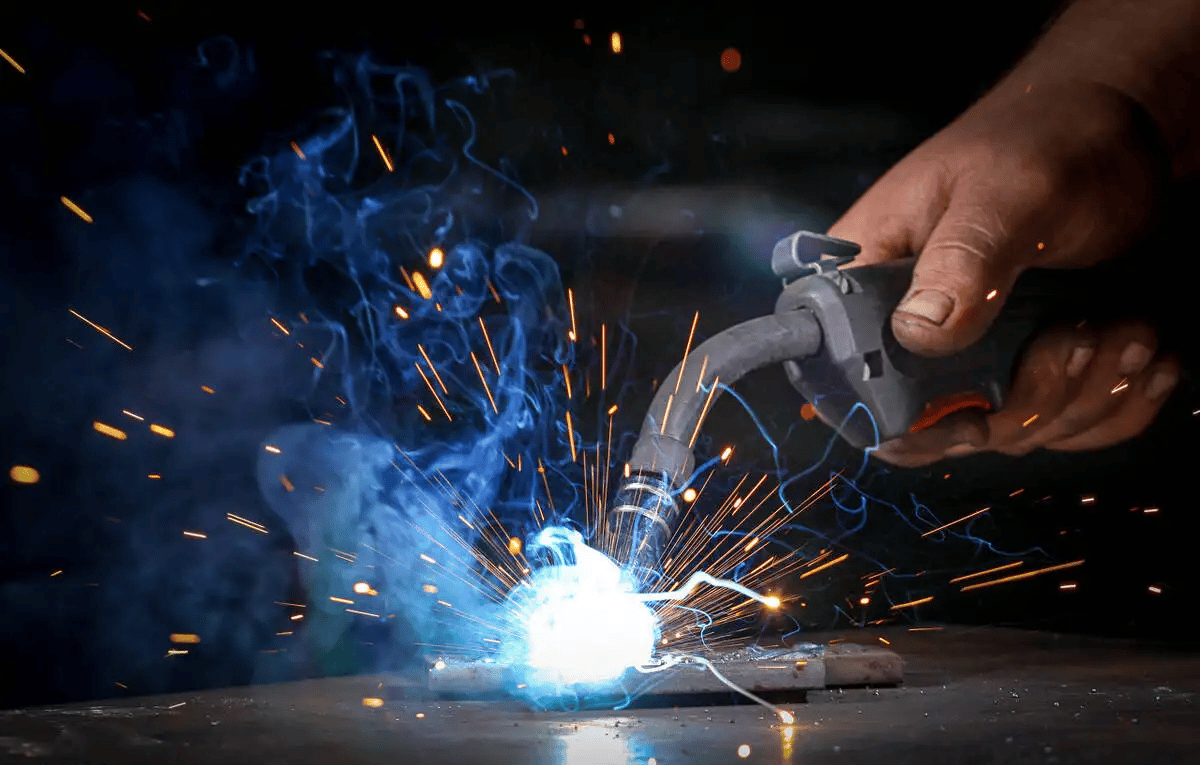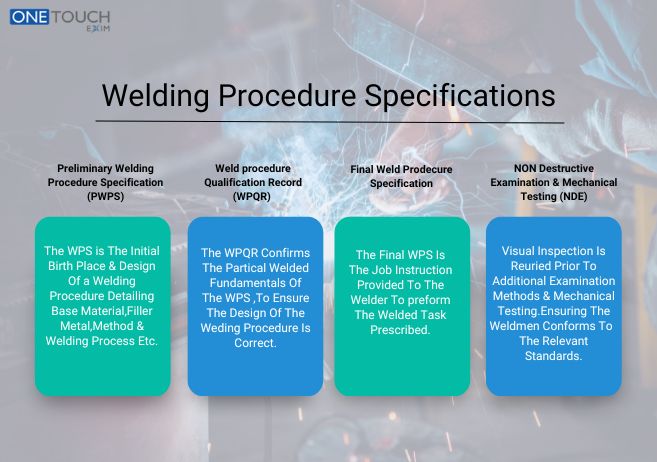Comprehending the Process of Welding Inspection Racine for Ideal Results
Comprehending the Process of Welding Inspection Racine for Ideal Results
Blog Article
Cutting-edge Approaches to Fillet Weld Evaluation and Screening: Enhancing Weld Quality and Compliance Requirements
In the world of welding, the top quality and integrity of fillet welds play a crucial function in making sure the architectural sturdiness and reliability of different industrial elements. With the consistent drive for improved effectiveness and conformity with stringent standards, the expedition of cutting-edge approaches to fillet weld evaluation and screening has actually come to be essential. As industries progress, the standard approaches might no more be sufficient in satisfying the demands of contemporary welding applications. By accepting innovative modern technologies and techniques, a brand-new perspective of opportunities emerges in the realm of weld high quality evaluation and adherence to compliance standards.
Advanced Non-Destructive Testing Approaches
Utilizing modern innovations, progressed non-destructive testing techniques play an important role in making sure the integrity and high quality of fillet welds. These methods, such as phased variety ultrasonic testing (PAUT) and magnetic bit screening (MPT), offer in-depth insights right into the weld's internal structure without creating any damages to the material. PAUT, as an example, uses multiple ultrasonic components to examine the weld from various angles, giving a detailed visualization of potential issues like lack of fusion or cracks.
By employing these sophisticated non-destructive screening strategies, weld assessors can properly evaluate the top quality of fillet welds, guaranteeing compliance with industry standards and guidelines. The capability to identify flaws early on not only enhances weld quality however likewise protects against costly rework or failures in architectural stability, underscoring the value of these innovative screening strategies in welding assessments.
Robotics and Automation in Assessment
The assimilation of robotics and automation has actually reinvented the assessment procedure for fillet welds, improving effectiveness and precision in quality analysis. Robotics use specific control and repeatability in evaluating welds, making sure constant and reputable results. Automated systems can be set to adhere to certain evaluation paths, ensuring thorough insurance coverage of welds and minimizing the threat of human mistake.
Robotic assessment systems geared up with advanced sensing units can spot and gauge weld functions with high precision, providing comprehensive information for analysis. These systems can recognize problems such as splits, absence of fusion, and porosity, enabling prompt rehabilitative actions to be taken. Furthermore, robotics and automation permit for real-time information collection and analysis, giving immediate comments to drivers and assisting in fast decision-making procedures.
Additionally, making use of robotics and automation in fillet weld examination boosts overall efficiency by minimizing examination times and increasing evaluation throughput. By enhancing the examination process, producers can make certain weld quality and conformity standards are satisfied successfully, ultimately causing set you back savings and improved item top quality.
Utilizing Artificial Intelligence for Analysis
Man-made intelligence plays a critical role in enhancing the efficiency and precision of evaluation in fillet weld assessment procedures. AI algorithms can rapidly refine huge quantities of data from weld evaluations, spotting problems or inconsistencies that might be testing to determine with the naked eye - Welding Inspection Racine.
Moreover, AI systems can gain from past evaluation data, constantly improving their capability to recognize prospective defects and inconsistencies in fillet welds. This adaptive learning ability boosts the overall quality assurance procedure, decreasing the probability of human mistake and ensuring that welds satisfy the called for standards. By integrating man-made knowledge into fillet weld analysis, industries can accomplish greater levels of effectiveness, uniformity, and conformity in their examination methods.
Portable Equipment for On-Site Inspection
 Enhancing field assessment efficiency, the adoption of mobile devices transforms on-site evaluation procedures for fillet welds. These devices offer versatility and comfort, permitting assessors to conduct comprehensive exams in various places, consisting of challenging or remote environments. Portable tools such as ultrasonic testing devices, magnetic particle inspection devices, and electronic radiography systems provide real-time information and high-resolution imaging abilities, making it possible for quick decision-making and instant feedback on weld top quality.
Enhancing field assessment efficiency, the adoption of mobile devices transforms on-site evaluation procedures for fillet welds. These devices offer versatility and comfort, permitting assessors to conduct comprehensive exams in various places, consisting of challenging or remote environments. Portable tools such as ultrasonic testing devices, magnetic particle inspection devices, and electronic radiography systems provide real-time information and high-resolution imaging abilities, making it possible for quick decision-making and instant feedback on weld top quality.One significant advantage of portable devices is their capability to simplify examination procedures, lowering downtime and enhancing overall productivity. Inspectors can conveniently transport these devices to various task sites, eliminating the demand for transporting hefty equipment or elements to off-site facilities. In addition, the mobility of these tools promotes cost-effectiveness by decreasing transport costs and accelerating examination timelines.
In addition, making use of portable devices for on-site evaluation promotes aggressive quality assurance measures, as assessors can immediately determine and address any kind of prospective welding defects or disparities. By integrating these innovative modern technologies into on-site examination methods, welding professionals can make certain compliance with industry criteria and improve weld quality, eventually causing improved architectural integrity and safety and security in various welding applications.
Assimilation of Data Administration Systems
Having actually optimized on-site assessment procedures with the utilization of portable devices, the next stage involves the seamless assimilation of data administration systems to further improve efficiency and information evaluation abilities in fillet weld evaluation and screening. Welding Inspection Racine. By integrating data monitoring systems into the assessment process, companies can streamline data collection, storage space, and evaluation. This combination permits for real-time monitoring of weld high quality, prompt identification of flaws, and punctual decision-making to correct any kind of issues that might emerge during the examination process
Information management systems play a critical duty in centralizing assessment information, assisting in very easy accessibility for authorized personnel, and guaranteeing information honesty and safety find this and security. With the combination of these systems, examiners can create thorough reports, track historic information for trend analysis, and improve overall process effectiveness. Furthermore, the integration of data administration systems allows seamless interaction between different stakeholders associated with the evaluation process, cultivating collaboration and improving overall quality assurance steps. Inevitably, the integration of data monitoring systems serves to boost the standards of fillet weld evaluation and testing, making certain compliance with sector regulations and improving weld top quality.
Final Thought
To conclude, innovative strategies to fillet weld inspection and testing have actually considerably improved weld top quality and compliance requirements. Advanced non-destructive screening methods, robotics, automation, man-made knowledge, mobile tools, and data administration systems like it have actually revolutionized the way weld examinations are conducted. By utilizing these innovations, markets can make certain that welds meet the required high quality requirements and guidelines, inevitably improving overall efficiency and security in welding processes.

By utilizing these sophisticated non-destructive testing methods, weld examiners can properly assess the quality of fillet welds, guaranteeing compliance with industry standards and regulations. Mobile devices such as ultrasonic screening tools, magnetic fragment inspection equipment, and digital radiography systems provide real-time information and high-resolution imaging capacities, making it possible for fast decision-making and prompt responses on weld top quality.
Having actually maximized on-site assessment procedures with the use of mobile devices, the next phase involves the seamless assimilation of information monitoring systems to better boost performance and information analysis capabilities in fillet weld evaluation and testing (Welding Inspection Racine). Inevitably, the integration of information monitoring systems serves to elevate the standards of fillet weld inspection and testing, making sure conformity with market regulations and boosting weld high quality
 In verdict, cutting-edge strategies to fillet click here to read weld assessment and screening have actually dramatically improved weld high quality and compliance criteria.
In verdict, cutting-edge strategies to fillet click here to read weld assessment and screening have actually dramatically improved weld high quality and compliance criteria.Report this page